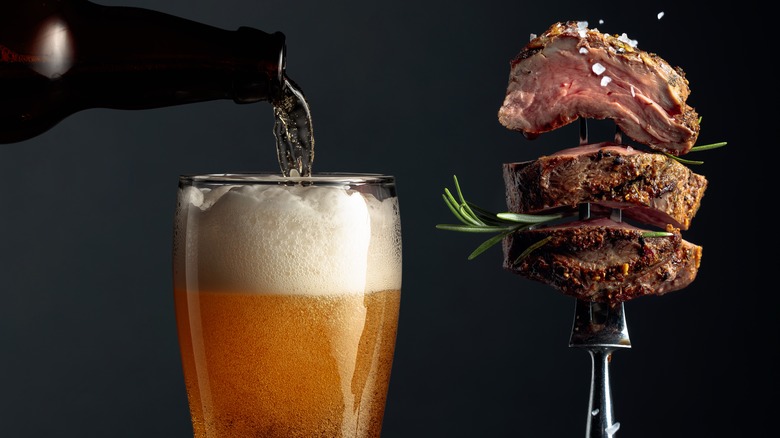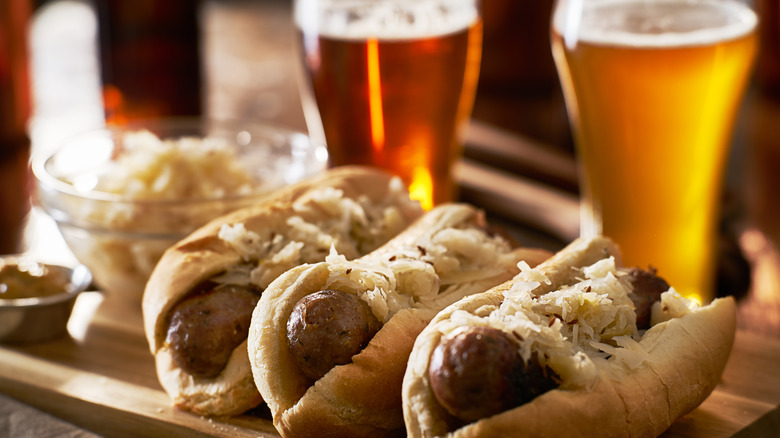The One Rule You Should Follow When Cooking With Beer
Beer is often considered the perfect beverage for virtually any occasion, whether tailgating at the ballpark, enjoying a night out with friends, or relaxing after a long day. Cracking open cold ones and pouring frothy pints have been associated with camaraderie and celebration for generations. Beer has been consumed for around 5,000 years, since ancient Mesopotamians began fermenting barley in water, according to History. Over the past several millennia, the effervescent libation has become ingrained in culinary cultures around the globe, evolving into various styles to satisfy any palate.
While sipping on your favorite brewski is certainly refreshing, there's so much more you can do with beer than drink it. In fact, similarly to wine, beer is also a popular ingredient for cooking and baking. For example, a lot of folks, particularly Wisconsinites, swear by simmering bratwurst in beer. Even Redditors agree that beer brats should be dubbed the official food of the Badger State. There are also tasty eats like beer cheese soup, beer bread, beer chili, beer-infused marinades, and other dishes that yield a hearty, robust flavor. So how does one decide which beer they should cook with?
If you enjoy drinking the beer, go ahead and cook with it
When it comes to cooking with beer, the rules are pretty straightforward. The most important rule is to cook with beer you'd actually drink. Yep, it's that simple! You wouldn't toss a veggie or spice you absolutely hate into the pot for any other recipe, would you? Stick to what you like.
There are, however, a few more important guidelines that correlate with this protocol, according to The Takeout. For instance, it's highly recommended to opt for brown or amber beers with malt-forward characters and toasty colors. Browns and ambers are mega-fragrant and possess nutty, semi-sweet flavors, which pair well with savory meals. If you have a tendency to reach for the hoppiest pale ale you can find, you might want to try something new to avoid an overly bitter bite. This happens because beer naturally fuses with the other ingredients, allowing its key notes to shine through.
Craft Beering stresses that the beer you use depends on the dish you're creating. Pilsners, which sport a golden hue and a mellow, crisp, earthy flavor, are great for chicken and pork. Stouts and porters, which are dark chocolate brown with a smooth, sweet, rich body, are an ideal match for beef. At the end of the day, when cooking with beer, choose the brews you'd normally gulp down by themselves.

